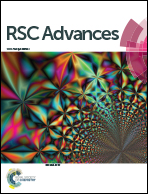A cellular model for screening of lactobacilli that can enhance tight junctions
Abstract
It is widely believed that the dysfunction of tight junctions (TJs) in the gut barrier is one of the most important pathogenic factors in inflammatory bowel disease (IBD). More and more studies show that probiotics can be engaged as a substitute for traditional medicine such as antibiotics to treat IBD. However, there are very few efficient cellular models that can rapidly screen effective probiotics for TJ regulation. Co-incubation of probiotics and PT–gliadin has been used by some researchers to study the TJ regulatory function of bacteria. In this study, a modification was performed to overcome the deficiency of this method, i.e., that the indirect effect of probiotics on TJ restoration cannot be excluded. In a sectional incubation model, some of the Lactobacillus strains proved to be effective in TJ regulation, which is similar to the result obtained with an animal model. Principal component analysis showed that the modified sectional incubation model reflected the regulatory mode of probiotics in the gut more accurately than that by the co-incubation model. This study provides a new strategy that may improve the efficiency of rapid screening of available probiotics for intervention in IBD.


 Please wait while we load your content...
Please wait while we load your content...